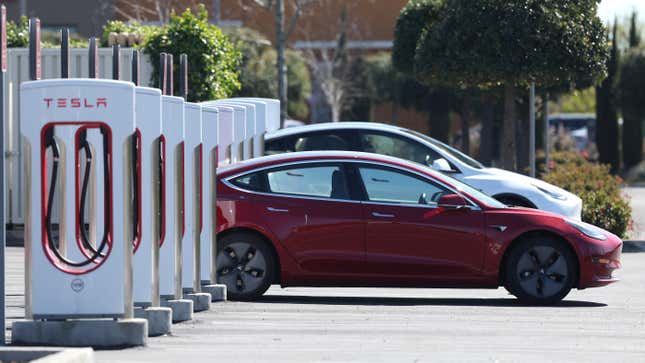
A recent study found that Tesla vehicle batteries degrade at a faster rate than the manufacturer’s warranty assures. Recurrent discovered that the range plummeted to 64 percent of the EPA-rated range after three years after combing data from 12,198 Tesla Model 3 and Model Y vehicles. While the information illustrates how inaccurate federal testing can be, it also falls short of where even Tesla believes the range should be.
It would be useful if there was full access to Recurrent’s dataset because the electric vehicle venture noted that only 2.5 percent of all EVs had their batteries replaced. Its data shows that 15 percent of replacements were from the 2015 model year vehicles and older, while vehicles from 2016 and newer accounted for less than one percent.
In a vacuum, battery deterioration is perfectly normal. Recurrent explains:
“Another way to understand how batteries in EVs age is to use what we know about battery science from laboratory testing. Generally, lithium-ion batteries degrade in an S-shaped curve. When a battery is new, there can be some noticeable degradation as the battery settles into its steady state. After that, there is a long period of slow, linear aging, followed by a sharp decrease when the battery dies. But even in cars that need a replacement, it is rare to see the catastrophic failure that is expected at the end of a lithium-ion battery’s life. Almost all of the EVs on the road today are in their stable state.”
The issues arise with the warranties. Tesla guarantees its batteries will retain at least 70 percent of their rated range for eight years or 100,000 miles, whichever comes first. Higher-priced models have lengthier warranties. For example, the Model X has a 150,000-mile guarantee. Recurrent’s degradation curve shows most Tesla vehicles dipping below 70 percent after one year.
The only good takeaway is that Tesla owners have the warranty in the first place. They can get their battery replaced. However, dealing with a service center can be another headache. What is the point of promising customers a certain level of quality knowing that your products won’t deliver?

